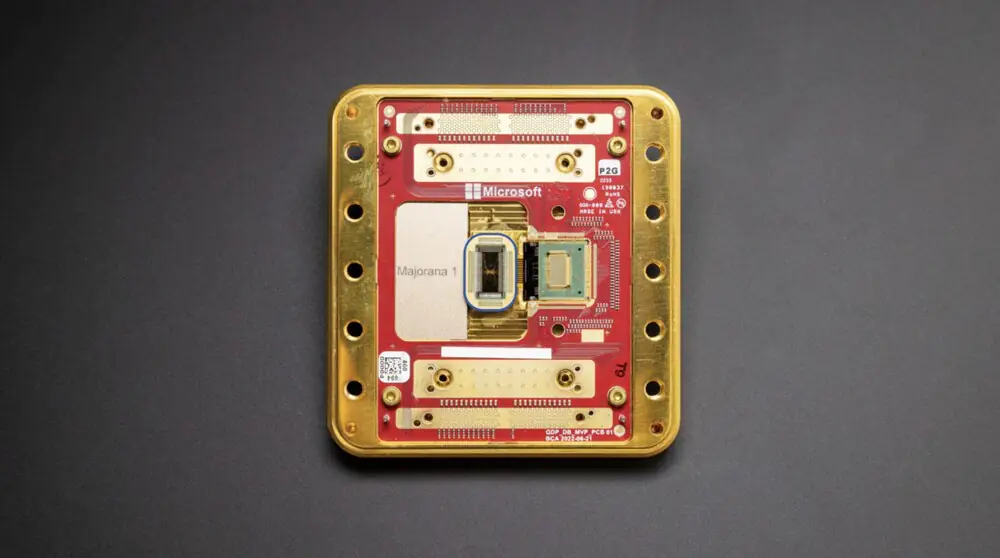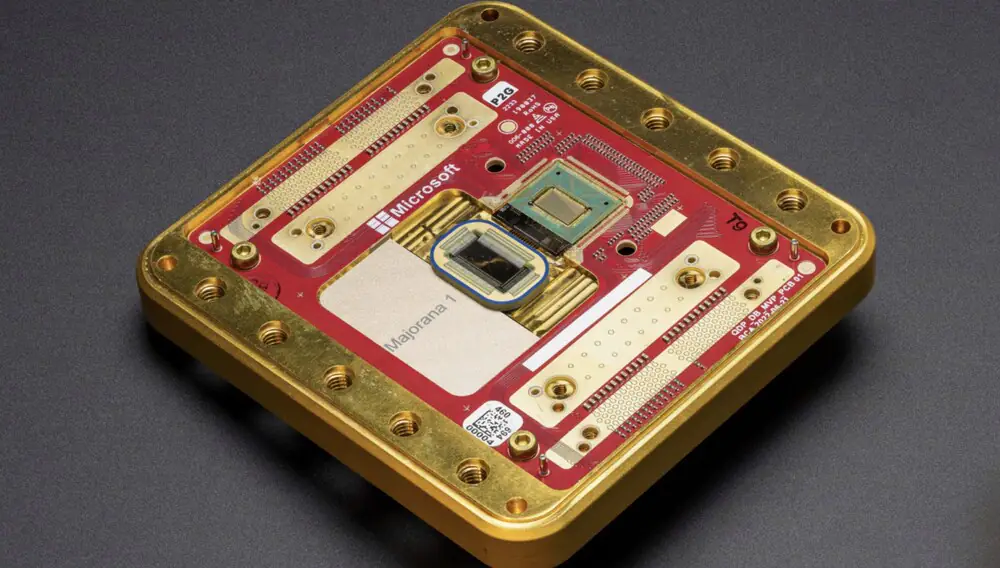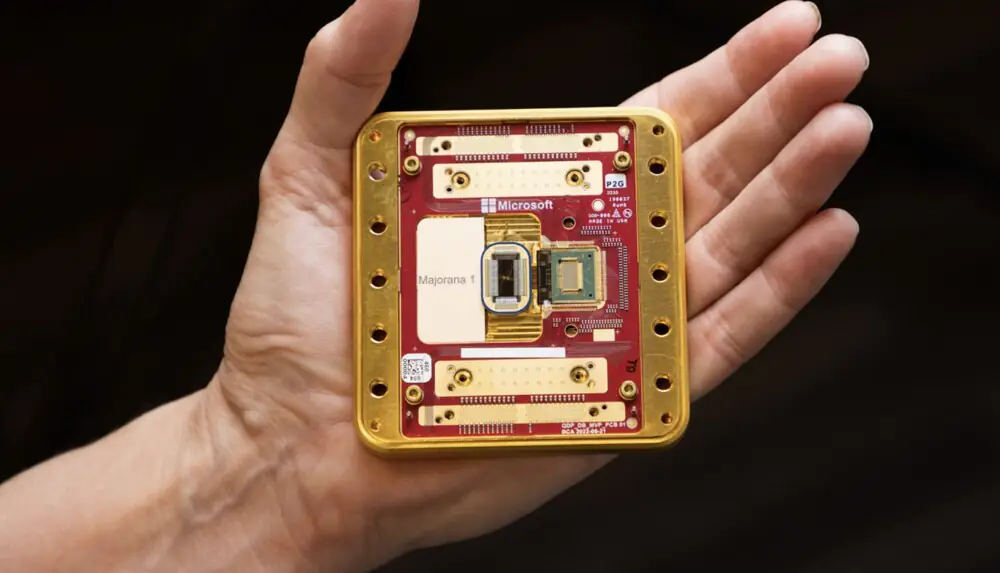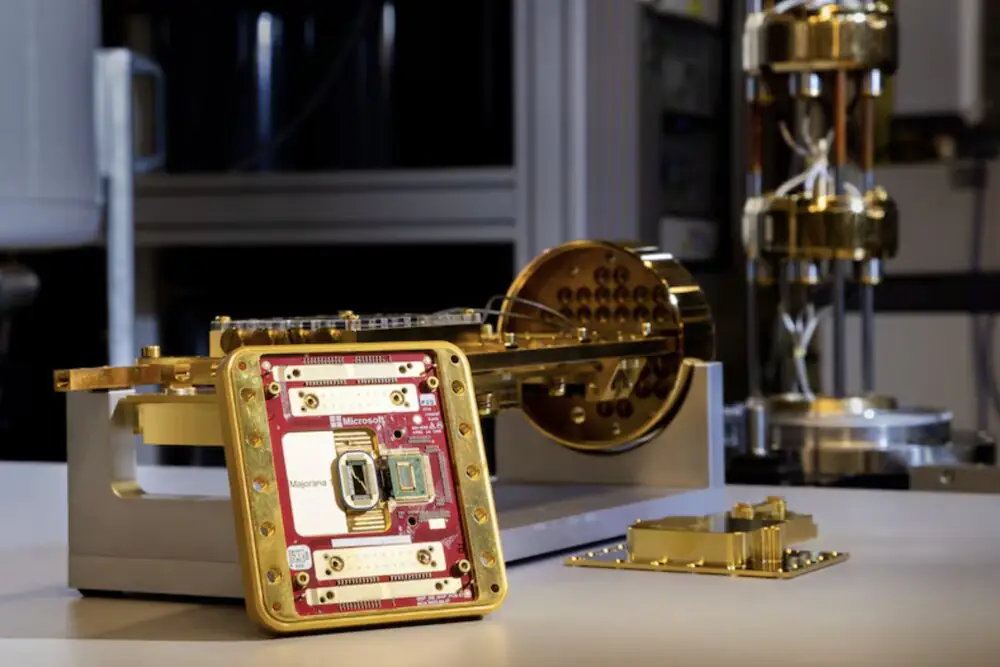© ROOT-NATION.com - Use of content is permitted with a backlink.
Microsoft, unveiling its new Majorana 1 quantum processor, has outlined a viable path toward a million-qubit quantum chip. But does this new state of matter truly mark a breakthrough for quantum computing, or is it just another step in its evolution?
Quantum computing has long been considered the next frontier in technology, promising solutions to problems beyond the reach of even the most powerful modern supercomputers. However, researchers have struggled for years with a fundamental challenge—how to build a system that can handle the complex physics of qubits, the basic units of quantum information, without succumbing to noise, instability, and scalability issues.
Microsoft now claims to have set a new course with its Majorana 1 chip, an innovation it refers to as the Topological Core architecture. Unlike conventional qubits made from standard semiconductors or superconducting materials, Majorana 1 relies on something entirely different—topological conductors. These materials can give rise to a new state of matter, a topological phase, distinct from traditional solid, liquid, or gas states.

But why does this matter? More importantly, why should anyone outside the field of quantum physics care? The potential of quantum computing extends far beyond research labs, influencing everything from the development of self-healing construction materials to optimizing catalysts that break down plastic into harmless byproducts. Microsoft believes that with Majorana 1, these breakthroughs could become a reality within years rather than decades.
Read also: Use It or Lose It: How AI is Changing Human Thinking
Another look at cubes
At the core of Microsoft’s progress is a new topological conductor material. Engineered from indium arsenide (a semiconductor) and aluminum (a superconductor), it is, as one researcher described, “literally assembled atom by atom.” The result is an ultra-pure environment capable of sustaining elusive quantum particles known as Majorana fermions.
Majorana fermions are theoretically one of the most reliable methods for storing quantum information. Their unique properties help shield data from environmental noise, preserving fragile quantum states. Traditional qubits are highly sensitive and prone to decoherence—a process where quantum states break down due to external interference. Even minor disturbances, such as stray electromagnetic signals, temperature fluctuations, or tiny physical disruptions, can cause errors. This inherent fragility has long been a major obstacle in building stable and scalable quantum computers.

Microsoft now claims that Majorana 1-based topological qubits offer hardware-level error resilience, effectively integrating stability into the qubit’s design. In simple terms, this could make quantum computers significantly more practical and easier to scale.
“We took a step back and asked, ‘What would a transistor for the quantum era look like? What properties should it have?’” said Chetan Nayak, Technical Fellow at Microsoft. “The way we got here is a unique combination—specific material quality and critical details in our new material set—that enabled us to create a new type of qubit and, ultimately, our entire architecture.”
Read also: Tectonic Shifts in AI: Is Microsoft Betting on DeepSeek?
Why this breakthrough is so significant
Quantum computing has the potential to revolutionize problem-solving, particularly in fields involving massive datasets or complex interactions in chemistry, physics, and materials science. However, achieving even a few hundred or thousand qubits that can reliably function remains a challenge.
One inherent issue is that qubits are prone to errors. Building systems with error correction typically requires significant overhead, using additional qubits to stabilize only a few “logical qubits” that perform the computations.

The topological approach aims to reduce the overhead for error correction by making each qubit inherently more stable. This represents a significant leap in the quest to build a machine capable of handling a million qubits. This threshold is considered essential by experts for tackling real-world problems, such as researching new pharmaceuticals, optimizing complex supply chains, or discovering self-healing materials that could repair cracks in bridges, airplane components, or even scratches on phone screens.
Achieving a million qubits in a chip small enough to fit in the palm of your hand may sound like something out of science fiction. However, Microsoft believes this scale is attainable through its Topological Core architecture.
“As you explore quantum space, there must be a path to a million qubits. Without it, you’ll hit a wall before reaching the scale necessary to solve the truly important problems that drive us,” said Chetan Nayak. “We’ve actually mapped out the path to a million.”
Read also:
- Are Noise-Canceling Headphones Harmful? Insights from Audiologists
- Most Fascinating Robotics Innovations of 2024
Rethinking control and measurement
Qubits need more than just stability—they must also be measurable to yield useful results. Traditional methods often rely on fine-tuning each qubit analogically, a complex and time-consuming process that becomes unmanageable as the number of qubits grows.
Microsoft sidesteps this challenge by introducing a “digital switch” that connects the ends of the nanowire (where the Majoranas reside) to a quantum dot. This quantum dot stores an electrical charge that changes based on the number of electrons present, similar to distinguishing between “one billion” and “one billion and one.” This difference in charge indicates whether the qubit is in an even or odd state, a key piece of data for quantum computations.

What’s significant is that measurements can be toggled on or off using voltage pulses, more akin to flipping a digital switch than adjusting sensitive dials. This approach frees engineers from the need to calibrate each qubit individually, potentially reducing the system’s complexity by orders of magnitude. Additionally, since it’s stable at the hardware level, the process requires fewer additional qubits for error correction.
Read also: Biomimicry: How Nature Inspires Engineers to Innovate
Creating the impossible: a new state of matter
The concept of a topological state of matter—a phase of matter distinct from solids, liquids, or gases—may sound like abstract quantum mechanics. However, it is the foundation of this approach. Creating topological conductors required Microsoft to develop a completely new class of materials.
Microsoft’s topological qubit architecture, shaped like a tiny “H” made of aluminum nanowires, brings together four controlled Majoranas to form a single qubit. These individual qubits can then be arranged on a chip, providing a straightforward path to scaling.

“It’s difficult because we had to demonstrate a new state of matter to get there, but after that, it’s relatively simple. It’s like tiling. You have a much simpler architecture that promises a much faster path to scaling,” said Krista Swore, another technical staff member at Microsoft.
This new state of matter is also why the Majorana fermions are so elusive: nature does not create them spontaneously. To induce their existence, temperatures near absolute zero, carefully aligned magnetic fields, and a flawless interface between superconducting aluminum and semiconducting indium arsenide are required. One disruption in the atomic structure, and the qubit fails. This is a remarkable breakthrough in materials science, highlighting the scale of the engineering challenges that Microsoft had to overcome.
Read also: 10 Examples of the Strangest Uses of AI
The path to real solutions
As with any ambitious research in quantum computing, it will take years to fully realize the results. However, Microsoft positions Majorana 1 as the missing piece of the puzzle that will accelerate Quantum’s ability to solve problems shaping the industry. The Defense Advanced Research Projects Agency (DARPA), responsible for funding high-risk and high-cost technologies, seems to agree. Microsoft is one of two companies chosen for the final stage of DARPA’s Underexplored Systems for Utility-Scale Quantum Computing (US2QC) program, which aims to develop the first fault-tolerant quantum computer with real commercial value.

The implications are enormous. With a system of a million qubits, scientists could theoretically unravel the most complex chemical mysteries, explain why certain materials corrode or crack, or clarify how certain enzymes act as catalysts in agriculture and healthcare.
Such discoveries could lead to the creation of self-healing infrastructure, more effective medications, or a universal method for breaking down plastic and combating microplastic pollution. Combined with advancements in artificial intelligence, quantum computers could turn our goals into “recipes” for new materials, potentially eliminating years of trial and error in research and development.
“From the beginning, we wanted to create a quantum computer for commercial impact, not just for intellectual leadership,” said Microsoft’s technical fellow Matthias Troyer. “We knew we needed a new qubit. We knew we needed to scale.”
Read also: Nuclear Waste: What It Is and How It Is Disposed Of
A turning point for Quantum
In many ways, the battle in the field of quantum computing mirrors the early days of the semiconductor revolution. Engineers knew that practical transistors would change the world, but first, they had to solve numerous material science and circuit design challenges.
Similarly, topological conductors could do for quantum computing what semiconductors once did for classical computing, providing the stable, scalable foundation necessary for the next generation of computational power.
The Majorana 1 chip, designed to house a million qubits and about the size of your palm, signals that the era of quantum “million-qubit” machines could be closer than we think. Of course, actual large-scale quantum machines still require years of development.
Dilution refrigerators, control logic, software stacks, and the entire computational ecosystem need to integrate seamlessly. However, the topological approach has partially removed the biggest scientific hurdles concerning “how to maintain qubit stability and reliably measure them.”
“One thing is to discover a new state of matter,” said Nayak, “Another is to use it to rethink quantum computing at scale.” It seems that Microsoft has done both, pushing quantum technology beyond lab setups and advancing it toward practical impact. The search for stable qubits may finally give way to an era where quantum hardware is more reliable, the path to a million qubits is charted, and commercial applications are on the horizon.
If this technology lives up to its promises, it won’t just be a turning point for Microsoft. It could signify a paradigm shift in how we develop everything—from advanced materials and pharmaceuticals to complex environmental solutions. And that’s why Majorana 1 is such a big deal.
Read also:
- How Taiwan, China and the US are fighting for technological dominance: the great chip war
- Transistors of the Future: New Era of Chips Awaits Us

